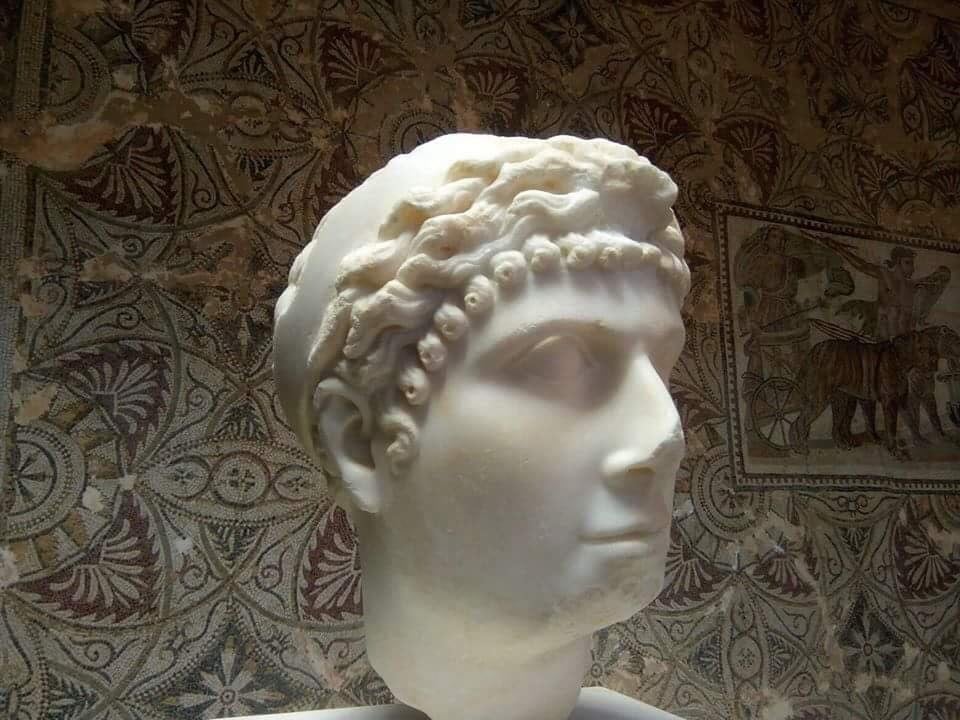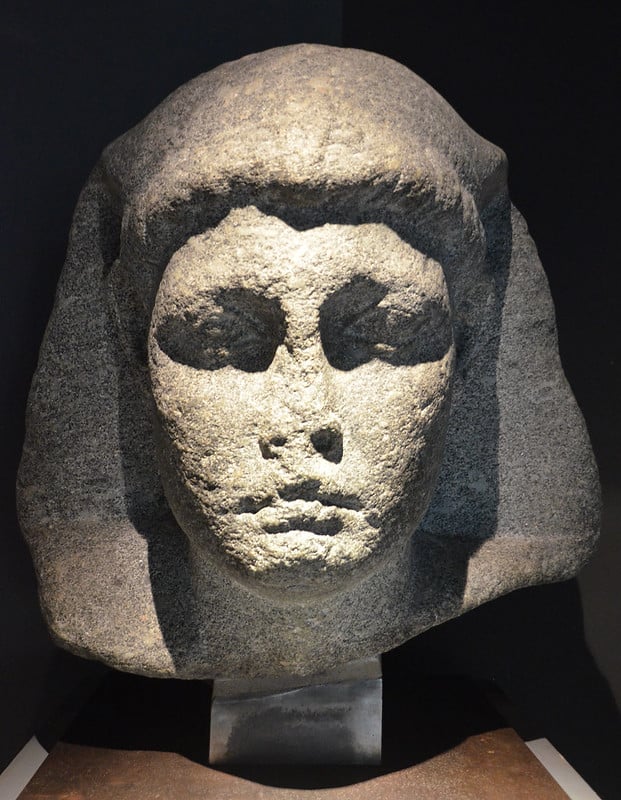
Queen Cleopatra (VII Philopator) is one of the most recognizable names in history, but her daughter, who managed to survive the chaos that befell Ptolemaic Egypt, is much less well known.
Cleopatra VII had four children. With Julius Caesar, she had a son named Caesarion. Later, to Mark Anthony, she bore three more children, Alexander Helios, Cleopatra II Selene, and Ptolemy Philadelphus. Of the four, only Cleopatra II Selene would go on to reclaim a royal title after the demise of her parents.
Cleopatra Selene’s story is remarkable, like that of her mother. She was taken to Rome in chains and held there for a time as a valuable political prisoner, albeit in relative comfort after the initial ordeal of a humiliating parade through the streets of the Eternal City. Later, she rose to become the queen of Mauritania, Numidia, and Cyrene.

The only daughter of Cleopatra VII
Cleopatra Selene, the sole daughter of Queen Cleopatra VII, was born around 40 BC in Egypt. On her mother’s side, she was born into the Ptolemaic dynasty, the Greek Macedonian royal family who had ruled over Egypt since the breakup of Alexander the Great’s empire. Her father, Mark Anthony, was an accomplished Roman statesman and general who held sway over the Roman Republic as one-third of the Second Triumvirate.
Her name “Selene” derives from the Ancient Greek word for “moon,” in contrast to her twin brother’s name, Alexander Helios, which signifies “sun” in Ancient Greek. Growing up in Alexandria, Cleopatra Selene received a comprehensive education befitting her royal status.
Formally acknowledged by their father, Triumvir Mark Antony, during a significant political gathering with their mother in 37 BC, the twins held a recognized position within the family. A year later, their younger brother Ptolemy Antony Philadelphos was born. Cleopatra likely intended for Selene to marry her older half-brother Caesarion, who shared the name of his father, Julius Caesar.
Anthony used his powers as a Roman triumvir to grant extensive territories to Cleopatra and their offspring. In 34 BC, a momentous event known as the Donations of Alexandria took place, attracting massive crowds. The spectacle featured Antony and Cleopatra seated on magnificent golden thrones placed upon a silver dais. Positioned below them were Caesarion, Cleopatra Selene, Alexander Helios, and Ptolemy Philadelphus on smaller thrones.
In this grand display, Antony proclaimed Cleopatra as the Queen of Kings, Caesarion as the legitimate son of Julius Caesar, and the King of Egypt. Furthermore, he bestowed individual kingdoms upon Selene and her brothers. Selene was appointed as the ruler of Cyrenaica and Libya. Although the young children were not yet of age to govern their respective lands, the proclamations were meant to signal political continuity and affirm the positions of their offspring as royal heirs.
Prisoner of Rome
Alas, the sons and the sole daughter of Cleopatra VII were not destined to inherit the kingdoms appointed to them. War was brewing between Anthony and the remaining Roman triumvir Octavian.
This war culminated in defeat for Anthony and Cleopatra at the Battle of Actium in 31 BC. The following year, Octavian’s forces landed in Egypt. Initially, Antony managed to achieve a minor victory on land, but his naval fleet subsequently surrendered to Octavian, swiftly followed by the surrender of his cavalry. This effectively sealed his, and Cleopatra’s fates.
Facing defeat and capture at the hands of Octavian, Anthony and Cleopatra both took their own lives. This left their children in a precarious position. Caesarion attempted to flee to India but was intercepted and killed. As pointed out by historian Michael Gray-Fow, as a son of Caesar, Caesarion was too much of a potential political threat to be left alive by Octavian, who styled himself as the rightful heir of the late Roman dictator.
Cleopatra and her surviving brothers were then captured by Octavian and brought back to Rome where they were paraded in his triumph. Cleopatra Selene and her twin brother Alexander Helios were paraded through the streets in golden chains so heavy they could hardly walk. As a play on their names, they were dressed as the moon and sun and forced to walk behind an effigy of their mother depicted clasping the venomous snake that had killed her.
After this humiliating ordeal, Octavian, who now styled himself Augustus Caesar, the first emperor of Rome, left Cleopatra Selene in the care of Octavia, his sister, and the fourth wife of the late Mark Anthony. Here, they lived as an extended family unit with their father’s surviving relations, although the historical record ceases to provide any clues as to the fate of Cleopatra Selene’s brothers. They may have died at a young age or lived fairly obscure lives.
Rise to power and rule over Mauritania
Octavia arranged for Cleopatra Selene to marry Jubba II of Numidia. Like his future wife, Jubba had initially been taken to Rome as a political hostage after his father was defeated by Julius Caesar. However, in Rome, he was able to dedicate himself to his studies and learned Latin and Greek. By the age of 20, he had gained Roman citizenship and was considered one of the city’s best-educated minds. He even wrote a book called Roman Archaeology.
The marriage was certainly a good fit for Cleopatra Selene, who now stood to rule alongside her husband. In 30 BC, Octavian restored the Kingdom of Numidia to Jubba II. Later, the match with Cleopatra Selene was made and Octavian provided a sizeable dowry.
According to Strabo, the kingdom of Jubba and Cleopatra Selene expanded further after the death of the Mauritanian king Bocchus II, who was an ally to Rome. After a brief period of direct Roman rule, Octavian transferred authority over Mauretania to Jubba and Cleopatra Selene in 25 BC.
Their joint rule has been looked upon favorably in the historical record. The royal couple patronized the performing arts, science, architectural endeavors, and research into natural history. Mauritania also became an important trading hub in the Mediterranean and an important ally to Rome in North Africa.
According to the historian Jane Draycott, on the coins she minted both independently and in collaboration with Juba, Cleopatra Selene consistently emphasized her Greek and Egyptian lineage, proudly acknowledging her dual heritage. Some of the coins bore the image of a crocodile, a symbol likely chosen for her by her mother Cleopatra VII.
Cleopatra Selene ruled beside her husband for two decades until she died at the age of 35. An epigram composed by the Greek epigrammist and ambassador, written to mark her death, read:
The moon herself grew dark, rising at sunset,
Covering her suffering in the night,
Because she saw her beautiful namesake, Selene,
Breathless, descending to Hades,
With her she had had the beauty of her light in common,
And mingled her own darkness with her death.
See all the latest news from Greece and the world at Greekreporter.com. Contact our newsroom to report an update or send your story, photos and videos. Follow GR on Google News and subscribe here to our daily email!



